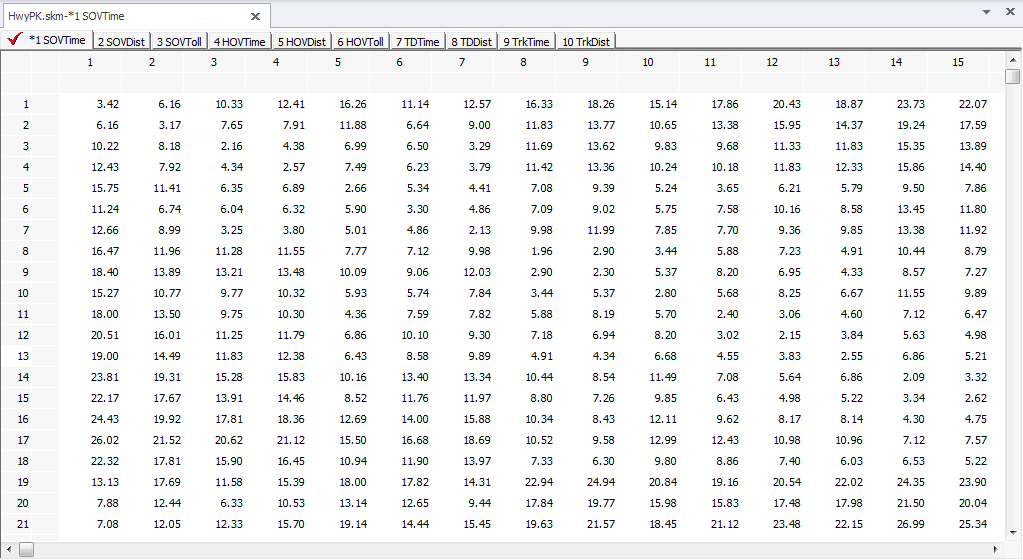Skim Matrix
# Summary
A skim matrix is a matrix that provides impedances between zones. Commonly, skim matrixes have the same number of rows and columns. All transportation modeling packages provide efficient ways of storing large skim files in compressed files. An open-source format to store matrices called open matrix (or OMX) is also available and is a good option for moving matrices between packages and/or programming languages.
# Highway Skims
A skim matrix provides travel time, distance, costs, or a combination thereof (called Generalized Costs) for each origin-destination zone pair. Often, skims distinguish travel for single-occupancy vehicles (who may not use HOV lanes, and therefore, may experience different travel times), shared-ride 2 and shared-ride 3+. This distinction, however, is only of value if the network contains links that are limited to shared-ride 2 or shared-ride 3+ vehicles. The graphic below shows a snapshot of a skim table.
 Example: Skim Table with time, distance and toll for SOV (Single-Occupancy Vehicles) and HOV (High-Occupancy Vehicles) and time and distance for trucks
Example: Skim Table with time, distance and toll for SOV (Single-Occupancy Vehicles) and HOV (High-Occupancy Vehicles) and time and distance for trucks
# Transit Skims
Transit skims provide information on travel between all zones by transit modes. Such skims often include information on travel time, fare, number of transfers, and many further transit attributes. For more advanced mode choice models, travel time is provided for each mode of transit separately, as some transit modes (particularly rail) are commonly evaluated more favorably than others. This way, a trip requiring 10 min by rail and 20 min by bus may be deemed less attractive than a trip that needs 20 min by rail and 10 min by bus.
# Logsums
It is common in travel demand modeling to use a combined impedance across several modes, rather than just using travel time of travel distance by one mode. This combined measurement is called Mode Choice Logsum. It is calculated by
where
where
